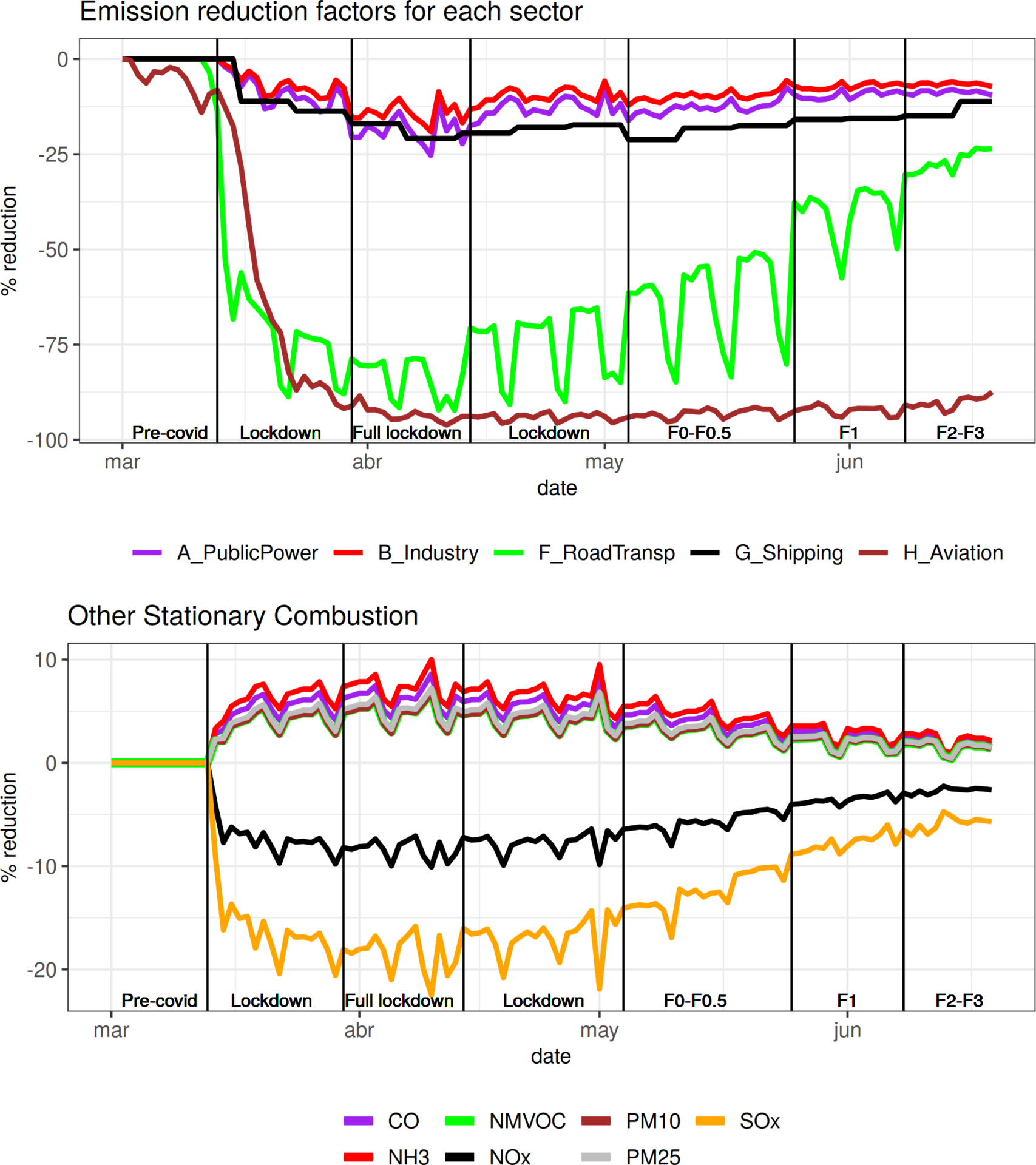New publication in “Atmospheric, Chemistry and Physics”
2 October 2023

See full article/ Veure l’article complet
English:
Tropospheric ozone (O3) is an important surface pollutant in urban areas, and it has complex formation mechanisms that depend on the atmospheric chemistry and on meteorological factors. The severe reductions observed in anthropogenic emissions during the COVID-19 pandemic can further our understanding of the photochemical mechanisms leading to O3 formation and provide guidance for policies aimed at reducing air pollution. In this study, we use the Weather Research and Forecasting model with Chemistry (WRF-Chem) coupled with the urban canopy building effect parameterization and building energy model (BEP + BEM) to investigate changes in the ozone chemistry over the metropolitan area of Barcelona (AMB) and its atmospheric plume moving northwards, which is responsible for the highest number of hourly O3 exceedances in Spain. The trajectories of the air masses from the AMB to the Pyrenees are studied with the Lagrangian FLEXible PARTicle dispersion model with WRF (FLEXPART-WRF). The aim is to investigate the response of ozone chemistry to reduction in precursor emissions (NOx – nitrogen oxides; VOCs – volatile organic compounds). The results show that, with the reduction in emissions, (1) the ozone chemistry tends to enter the NOx-limited or transition regimes, but highly polluted urban areas are still in the VOC-limited regime; (2) the reduced O3 production is overwhelmed by reduced nitric oxide (NO) titration, resulting in a net increase in the O3 concentration (up to 20 %) in the evening; (3) the increase in the maximum O3 level (up to 6 %) during the highest emission-reduction period could be attributed to an enhancement in the atmospheric oxidants hydroxyl and nitrate radical (OH and NO3) given their strong link with O3 loss or production chemistry; (4) the daily maximum levels of ozone and odd oxygen species (Ox) generally decreased (4 %) in May – a period with intense radiation which favours ozone production – with the reduced atmospheric OH and NO3 oxidants, indicating an improvement in the air quality; and (5) ozone precursor concentration changes in the urban plume of Barcelona contribute significantly to the level of pollution along the 150 km south-to-north valley in the Pyrenees. Our results indicate that O3 abatement strategies cannot rely only on NOx emission control but must include a significant reduction in anthropogenic sources of VOCs. In addition, our results show that mitigation strategies intended to reduce O3 should be designed according to the local meteorology, air transport, particular ozone regimes, and oxidation capacity of the atmosphere of the urban area.
Català:
L’ozó troposfèric (O3) és un important contaminant de superfície en zones urbanes, i els seus mecanismes de formació són complexos i depenen de la química atmosfèrica i de factors meteorològics. Les importants reduccions observades en les emissions antropogèniques durant la pandèmia de COVID-19 poden ajudar-nos a comprendre millor els mecanismes fotoquímics que condueixen a la formació d’O3 i orientar les polítiques destinades a reduir la contaminació atmosfèrica. En aquest estudi, utilitzem el model Weather Research and Forecasting with Chemistry (WRF-Chem) acoblat amb les parametritzacions “urban canopy building effect parameterization and building energy model” (BEP + BEM) per investigar els canvis en la química de l’ozó sobre l’àrea metropolitana de Barcelona (AMB) i el seu desplaçament cap al nord, responsable del major nombre de superacions horàries d’ O3 a Espanya. Les trajectòries de les masses d’aire des de l’AMB fins als Pirineus s’estudien amb el model de dispersió lagrangià FLEXible PARTicle amb WRF (FLEXPART-WRF). L’objectiu és investigar la resposta de la química de l’ozó a la reducció de les emissions de precursors (NOx: òxids de nitrogen; VOC: compostos orgànics volàtils). Els resultats mostren que, amb la reducció de les emissions, (1) la química de l’ozó tendeix a entrar en els règims limitats per NOx o de transició, però les zones urbanes molt contaminades segueixen en el règim limitat per VOC, (2) la menor producció d’O3 es veu superada per la reducció d’òxid nítric (NO), la qual cosa dona lloc a un augment net de la concentració d’O3 (fins a un 20%) a la tarda; (3) l’augment del nivell màxim d’O3 (fins a un 6 %) durant el període de major reducció d’emissions podria atribuir-se a un augment dels oxidants atmosfèrics radicals hidroxil i nitrat (OH i NO3), donada la seva estreta relació amb la química de pèrdua o producció d’O3; (4) els nivells màxims diaris d’ozó i d’Ox van disminuir en general (4 %) al maig -període d’intensa radiació que afavoreix la producció d’ozó- amb la reducció dels oxidants atmosfèrics OH i NO3, la qual cosa indica una millora de la qualitat de l’aire; i (5) els canvis de concentració de precursors d’ozó en el plomall urbà de Barcelona contribueixen significativament al nivell de contaminació al llarg dels 150 km de la vall sud-nord dels Pirineus. Els nostres resultats indiquen que les estratègies de reducció de l’O3 no poden basar-se únicament en el control de les emissions de NOx, sinó que han d’incloure una reducció significativa de les fonts antropogèniques de VOC. A més, els nostres resultats mostren que les estratègies de mitigació destinades a reduir l’ O3 s’ han de dissenyar en funció de la meteorologia local, el transport aeri, els règims particulars d’ ozó i la capacitat d’ oxidació de l’ atmosfera de la zona urbana.

Image extracted from the article demonstrating the impact of the pre-COVID, lockdown, and normalization periods on transportation modes and emissions of air pollutants and suspended particles. / Imatge extreta de l’article en la qual es mostren els efectes de l’etapa pre-covid, confinament i normalització en els principals mitjans de transport i les emissions de gasos contaminants i partícules.